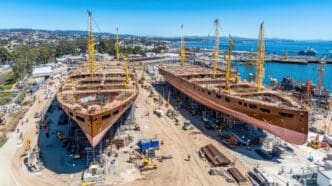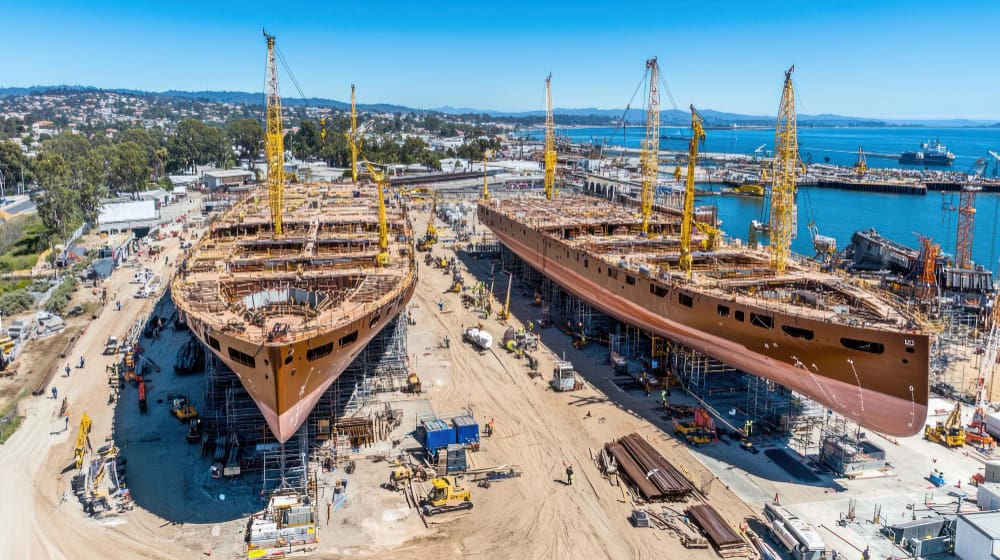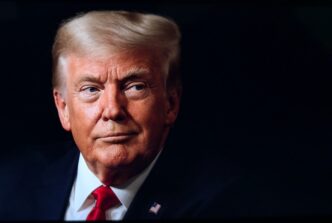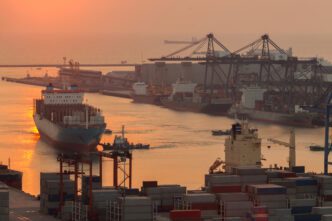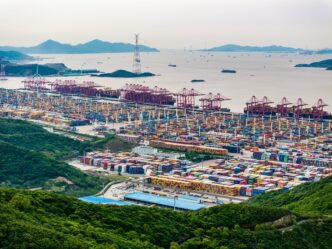SEOUL – Facing mounting economic pressure from U.S. tariffs and a looming deadline, South Korea is advancing a novel strategy that wagers one of its most prized industrial assets—its world-class shipbuilding industry—to secure critical trade concessions from Washington. As Asia’s fourth-largest economy grapples with significant levies on key exports like steel and automobiles, Seoul is now pivoting its focus to an offer of strategic partnership, hoping its shipbuilding might can persuade the U.S. to permanently waive a suspended 25% tariff before a July 8 decision point.
The proposal from the South Korean government is both ambitious and pragmatic: it offers to lend its formidable expertise and capacity to help revitalize the American shipbuilding industry. This diplomatic gambit comes at a crucial moment when the United States is actively seeking to strengthen its maritime capabilities and is in search of reliable, high-capacity shipyards in the strategically vital Asia-Pacific region. By positioning itself as a solution to a U.S. strategic need, Seoul hopes to reframe the trade discussion from one of punitive tariffs to one of mutual benefit, a move that has reportedly garnered interest from Washington.
The foundation of this strategy was laid decades ago. South Korea’s rise as a shipbuilding titan was no accident but the result of deliberate and sustained government policy dating back to the 1970s. Under the leadership of then-President Park Chung-hee, the nation embarked on an aggressive industrialization drive that prioritized heavy industries. Shipbuilding, alongside steel production, was designated as a cornerstone of the country’s economic future and was nurtured with significant state subsidies and strategic support. This long-term vision transformed South Korea from a war-torn nation into an industrial powerhouse, eventually becoming the world’s second-largest shipbuilding nation, surpassed only by its chief rival, China.
The economic importance of this sector cannot be overstated. In 2024 alone, shipbuilding accounted for nearly 4% of South Korea’s total exports, with the sector’s value growing by an impressive 20% from the previous year. This industrial muscle provides Seoul with significant leverage. The offer to assist the U.S. is not just a diplomatic courtesy; it is a proposal backed by decades of proven experience, advanced technology, and immense production capacity that the American industrial base currently lacks.
However, South Korea’s industrial champion is not without its own vulnerabilities, a reality that adds urgency to the negotiations. The nation’s shipyards are locked in a fierce, high-stakes competition with China, which often competes with the backing of state-driven financing and lower labor costs. This intense rivalry puts constant pressure on profit margins and market share. Domestically, the industry faces a demographic headwind, with a declining and aging workforce in traditional shipbuilding hubs like Ulsan and Geoje, making it more difficult to maintain its competitive edge over the long term.
These challenges form the backdrop against which the tariff negotiations are unfolding. A favorable outcome with the United States would provide a significant boost, securing a key export market and reinforcing a critical strategic alliance. A failure to secure an exemption, however, would not only hurt the bottom line for major shipbuilders like HD Hyundai Heavy Industries, Samsung Heavy Industries, and Hanwha Ocean but would also add another layer of economic strain at a time of intense global competition.
As the July 8 deadline approaches, the discussions between Seoul and Washington have become more than a standard trade dispute. They have evolved into a complex negotiation involving economic security, industrial policy, and geopolitical strategy. South Korea has put a powerful asset on the table, betting that its ability to build the ships the U.S. needs will be more valuable to Washington than the revenue from a new round of tariffs. The outcome will serve as a significant indicator of the future of the U.S.-South Korea economic partnership and could set a new precedent for how strategic industrial capabilities are leveraged in the complex world of international trade diplomacy.

